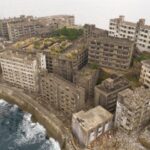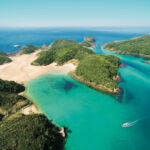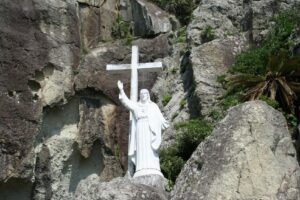
Nestled along the western coast of Kyushu, Nagasaki Prefecture holds one of Japan’s most moving and mysterious stories — that of the Hidden Christians (Kakure Kirishitan, 隠れキリシタン). For more than 250 years, during the Edo period’s national isolation and prohibition of Christianity, believers in Nagasaki practiced their faith in secret, preserving it in unique ways that blend European Christianity with Japanese culture.
Today, their legacy lives on in UNESCO World Heritage Sites, hidden churches, remote islands, and vibrant local communities — offering travelers a deeply spiritual and historical journey unlike anywhere else in Japan.
Contents
A Brief History: Faith in Hiding
Christianity first arrived in Japan in 1549, brought by St. Francis Xavier and Jesuit missionaries. It spread rapidly, especially in Kyushu, where Nagasaki became the center of Japanese Catholicism.
However, after the Tokugawa shogunate banned Christianity in the early 17th century, believers were forced to choose between abandoning their faith or practicing it in secret. Those who refused persecution became known as Kakure Kirishitan, or “Hidden Christians.”
They disguised Christian icons as Buddhist statues, used orasho (hidden prayers derived from Latin and Portuguese), and secretly passed down their faith through generations. Their courage and devotion became one of the most remarkable examples of spiritual resilience in world history.
UNESCO World Heritage: Hidden Christian Sites in the Nagasaki Region
In 2018, twelve locations in Nagasaki and the neighboring Amakusa area were designated collectively as a UNESCO World Heritage Site:
“Hidden Christian Sites in the Nagasaki Region.”
These places illustrate how faith survived underground and re-emerged in the late 19th century when the ban on Christianity was finally lifted.
Key sites include:
1. Oura Cathedral (大浦天主堂) – Nagasaki City
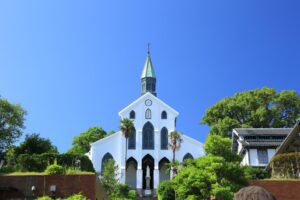
Built in 1864 by French missionaries, Oura Cathedral is Japan’s oldest standing church and the first Western-style building designated as a National Treasure.
It became world-famous after the event known as the “Discovery of the Hidden Christians” (1865), when a group of local villagers revealed to a priest that they had secretly maintained their Christian faith for centuries.
2. Goto Islands (五島列島)
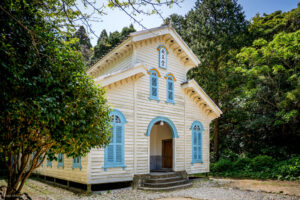
The remote Goto Islands, west of Nagasaki, became a safe refuge for persecuted Christians.
Here, hidden believers built small, isolated churches, often in hard-to-reach coastal areas.
Among the most notable are:
-
Egami Church (Egami Catholic Church) on Naru Island, featuring white wooden walls and a peaceful seaside setting.
-
Dozaki Church, an early Gothic-style building housing artifacts from the Hidden Christian era.
Today, visitors can explore these islands by ferry, cycle along scenic coastlines, and visit small fishing villages where the Christian faith still thrives.
3. Hirado Island (平戸島)
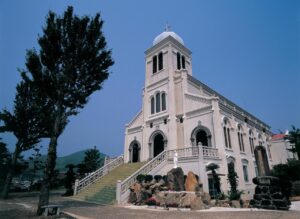
Hirado was one of the first places where Christianity spread in Japan. The island’s landscape tells a story of religious coexistence — Catholic churches and Buddhist temples stand side by side, symbolizing Japan’s complex spiritual history.
4. Kasuga Village and Sacred Sites in Hirado
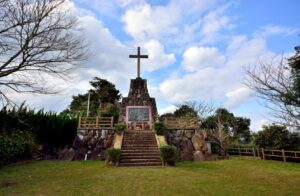
This area shows how Hidden Christians maintained their faith within a traditional Japanese agricultural and natural environment.
5. Sakitsu Village (崎津集落, Amakusa, Kumamoto)
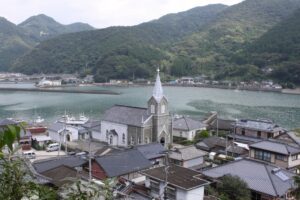
Though slightly outside Nagasaki Prefecture, Sakitsu Village is part of the same UNESCO designation. The Sakitsu Church, standing quietly by a fishing port, reflects the blending of Western and Japanese religious architecture — a symbol of adaptation and endurance.
Cultural Experience: Living Faith and Local Traditions
While many Hidden Christians eventually returned to Catholicism after the ban was lifted in 1873, some communities continued their unique hybrid faith, preserving prayers, rituals, and secret icons that differ from official church practices.
Travelers can experience:
-
Local storytelling and museum exhibits on how villagers hid their beliefs.
-
Pilgrimage routes connecting historic churches and holy sites.
-
Cultural events such as music performances of ancient orasho chants.
-
Visits to small island communities, where you can feel the quiet reverence that still defines these sacred places.
Museums and Learning Centers
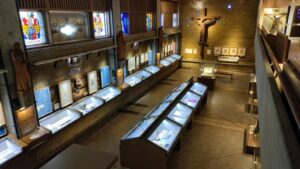
-
26 Martyrs Museum (Nagasaki City): Honors the memory of 26 Christians executed in 1597 and tells the story of early missionaries.
-
Nagasaki Museum of History and Culture: Features exhibitions about international trade, faith, and cultural exchange in early modern Nagasaki.
-
Goto Churches Historical Museum: A must-visit for travelers exploring the islands. It introduces the life and architecture of Christian communities and their ongoing preservation efforts.
Travel Tips and Access
-
Main Base: Nagasaki City
From here, you can visit Oura Cathedral, the 26 Martyrs Museum, and take ferries to the Goto Islands. -
Getting There:
-
By Air: About 2 hours from Tokyo or 1.5 hours from Osaka to Nagasaki Airport.
-
By Train: From Fukuoka (Hakata Station) via the Nishi-Kyushu Shinkansen (approx. 1 hour).
-
-
Goto Islands Access:
-
Ferry or high-speed boat from Nagasaki Port or Sasebo Port.
-
Alternatively, domestic flights from Nagasaki to Fukue Airport (about 30 min).
-
-
Recommended Season: Spring and autumn for mild weather and calm seas.
Why You Should Visit
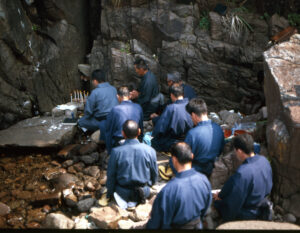
The story of the Hidden Christians of Nagasaki is not just about religion — it’s about human endurance, cultural fusion, and the quiet power of faith.
Each church, island, and hidden valley carries echoes of those who kept their beliefs alive through centuries of danger and silence.
For travelers seeking a spiritual and historical journey off the beaten path, Nagasaki’s Hidden Christian Sites offer one of the most profound cultural experiences in Japan — a bridge between East and West, past and present.
Practical Information
-
UNESCO Title: Hidden Christian Sites in the Nagasaki Region
-
Location: Various sites in Nagasaki and Kumamoto Prefectures
-
Languages: English information available at major museums and churches
-
Admission: Varies by site (many are free; donations appreciated)
Related articles
Official Website
https://kirishitan.jp/en
Accommodation sites
Agoda
